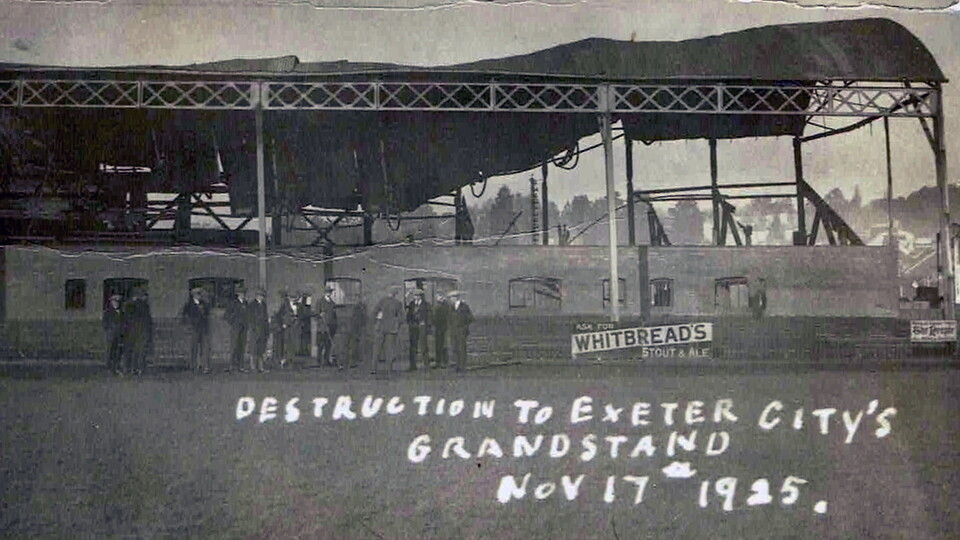One hundred years ago today Exeter City’s first grandstand was destroyed in a dramatic fire.
Tuesday 17 November 1925 had started off quietly at St James Park as the Exeter and Plymouth Gazette reported in its paper the following day.
‘During the morning the players had a trial game, and before dinner the playing gear was hung around a slow- combustion stove in the training room to dry. Everything was quite in order when the Club officials left for dinner’.
But things were about to take a massive turn for the worse in the grandstand where the stove was located. The article continues: ‘about 2 o’clock several people passing along the roads in the vicinity of the ground noticed smoke issuing from one corner of the structure.
‘One of these happened to be Supt. Pett, of the Fire Brigade, and he immediately proceeded to an alarm call to the Brigade. The club Manager (Mr Fred Marvin) arrived at the ground in front of the stand almost simultaneously, and seeing smoke immediately rushed to the rear of the stand and endeavoured to open a door.
‘Just as he attempted to do so the whole structure burst into flames; windows flew out, and he was driven back by smoke and fire. The groundsman (Mr Jim Orchard) also ran round, but was helpless in view of the fierce conflagration.
‘Mr Mavin and Mr W Hawkins of 80, Howell Road, dashed to the offices and succeeded in saving the Club books and papers, together with a few chairs. Mr A Tucker (Trainer) tried to get in at the front of the stand, but was overcome by fumes and had to receive attention from ambulance men who arrived with the firemen’.
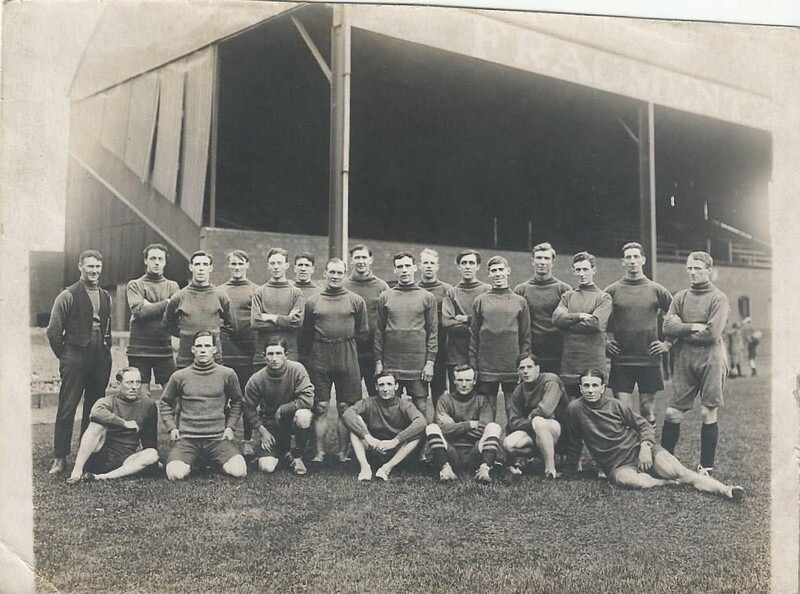
The battle to put out the fire was challenging to say the least. The newspaper report continued: ‘the firemen commenced to attack the flames from the rear, but the hose was burned and the men had to get to the front. The heat was intense, and the flames ate up the building as if it had been straw. Of course that was not really surprising as the stand, apart from brick foundations and a corrugated iron roof and back, was composed entirely of wood and a strong easterly wind swept the flames from the end where they originated to the other extremity of the structure. By half past two the whole building was gutted and only the brickwork remained in position’.
The article reported that ‘all the players’ gear, including boots, jerseys etc has gone. The boots present a problem, for no man can play in new footwear. Training will be impaired, though the players were fitted with new boots yesterday afternoon’.
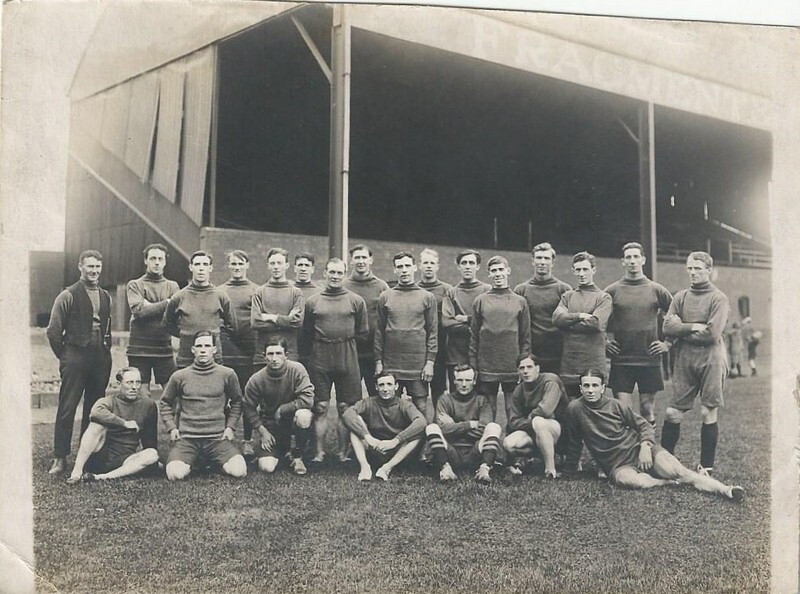
Amazingly just 11 days later Exeter played their home FA cup tie with Swansea Town at St James Park. There had been offers to play it elsewhere. ‘Ample seated accommodation’ was hastily arranged although not under cover. Tents were placed on the site of the old stand for the use of players and officials. And emergency dressing rooms were set up too. Swansea used decorators Messrs Neal’s in St James Road and City changed at the Red Lion in Sidwell Street. Exeter lost 3-1 in front of a crowd of nearly 10,000.
The destroyed grandstand had originally been built in 1908 as the club upgraded the facilities at St James Park in time for the advent of Southern League football and the professional era. Its destruction was a financial challenge. Club Secretary, Sid Thomas, said a new stand would cost £7000 but their insurance cover was only for £5000.
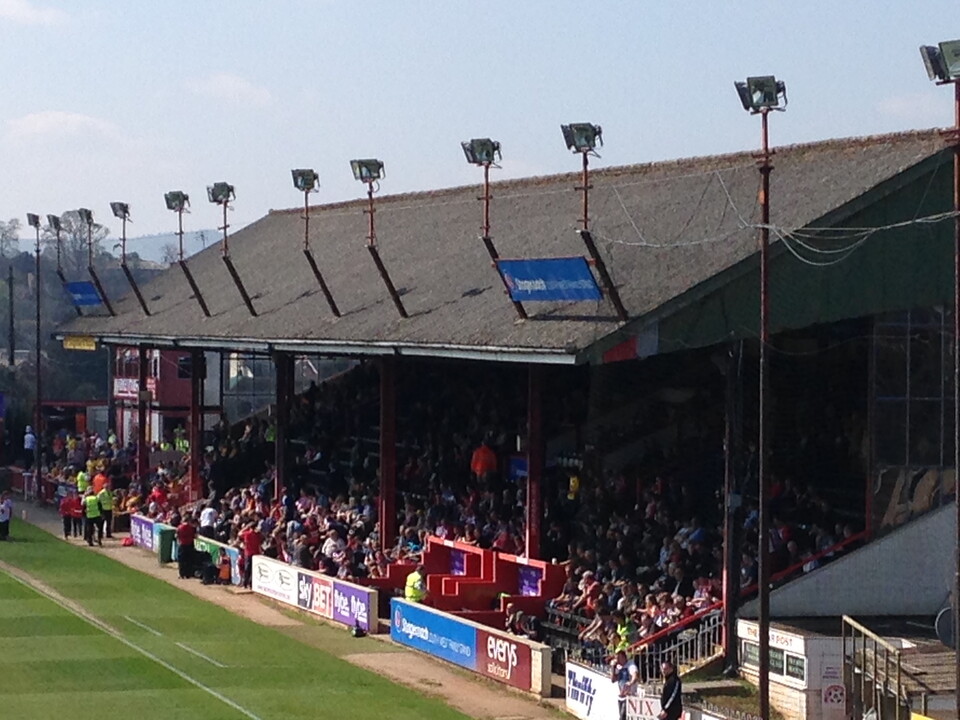
Nevertheless a new stand was built in time for the following season. Subsequently known to fans as the ‘Old Grandstand’ this was said by ‘Chiel’ of the Football Express ‘to be as smart as anything in the South’. The Old Grandstand lasted for over 90 years before being taken down in 2017. Its replacement The Adam Stansfield Stand was officially opened in 2018 – City’s third grandstand on that side of the pitch.
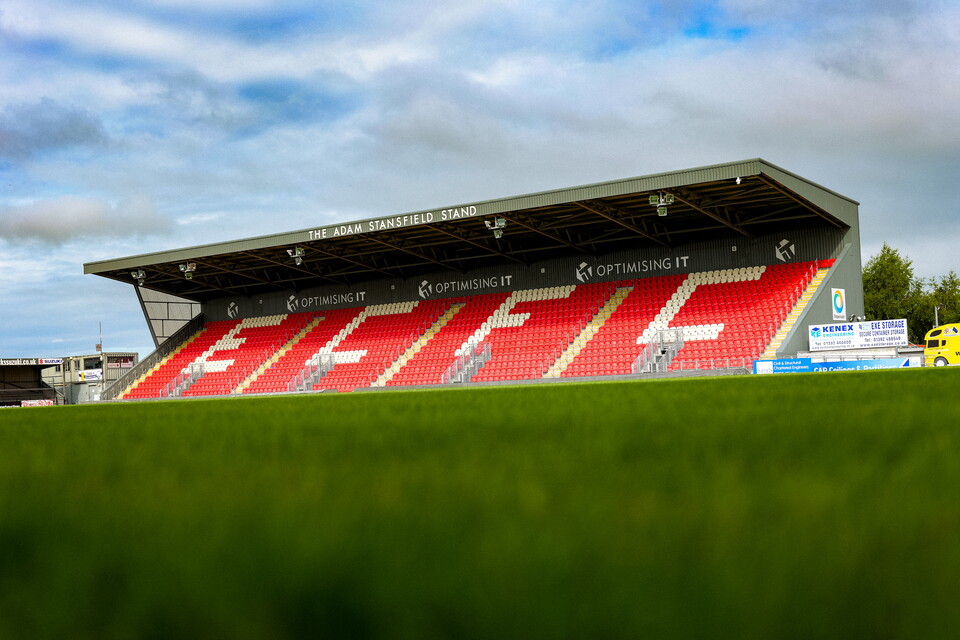
Photographs of and newspaper reports relating to the first grandstand and the fire can be found on Exeter City Football Club Museum’s online Grecian Archive at: grecianarchive.exeter.ac.uk.

